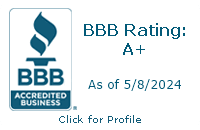A look at structures that can be put into place to make personal accountability successful.

Welcome to the second of a two-part e-update on personal accountability. A quick recap (or view the original January 2006 e-Update):
- "Accountability" is defined as "willingness to explain your actions."
- Improving business performance involves a combination of people, process, and technology.
- People must be willing to allow processes to link them with enabling technology – this linkage, however, can be risky to the individual, as it may expose performance issues and lead to consequences.
- The greatest success comes from people willing to practice personal accountability through one or more techniques – an active commitment to a business improvement organization, a board of advisors, a coach, or an accountability partner.
We ended our discussion last month with the following question, developed by my coach and me from the concepts of Dr. Henry Cloud and others, as well as our own experiences:
What external structures can be put in place (or changed) to make focused intentions a reality?
Let's break this question down by the key words:
- External means "external to the person." The ultimate goal is to make habits permanent by instilling them into our self-discipline.
- Structure refers to a program or plan, with specific steps and dates, and known consequences that help move you toward your goal.
- Put in place requires a deliberate decision to create this external structure, even if it is initially uncomfortable. Trust me, having to explain your actions to someone else – especially a person having a thorough, effective questioning technique – is, at times, agonizing.
- Focused is just that simple – what are the main things that need to be done? Dr. Cloud talks about acting like an ant – how can an ant build a city? It shouldn't be able to do this, but it does so through focused, consistent efforts.
- Intentions reflect the desired, future state of affairs.
- Reality reflects the real, true state of affairs.
How has this played out in real life? I'm willing to use myself and my firm as two examples.
- The results for me of working with my coach have been a greater focus on developing others in the firm, and "working on the business, not just in the business." My focus has improved because I have worked to better define the roles of myself and others in the business, intentionally taking myself out of certain roles that I had previously performed – for example, running our business development meeting. By structuring roles to better use our talented people, they have excelled and taken ownership of these roles, allowing them to develop further and permitting me to focus on specific activities related to client service and business development.
- Not surprisingly, even after 16 years in the consulting business, Todd Herman Associates continues to be a firm that seeks to increase its client base for growth and success. We are dedicated to our clients and welcome new opportunities which challenge and excite us. In November 2004, we instituted a formal weekly business development plan, bringing together our own people, processes, and technology. Since implementing this plan, we have more consistently pursued and won new projects and new clients, due to structure, process, focus, and accountability. During these 14 months, we have individually and collectively experienced a strange mixture of stubbornness, resistance, fits and starts – and eventually success, as a strong team has formed, becoming committed to each other's professional and personal success, thereby yielding business success.
What is still to come? Remember that the goal of any accountability technique is to help someone achieve extraordinary results. On January 11, 2006, I had my first-ever business development performance review, conducted by my Director of Business Development. Because this was a new experience for me and a new process for the firm, this was time-consuming – but it yielded striking insights about changes I need to make to better enable my company's success. Insights and action steps coming out of this review were:
- I intend to identify and define my key tasks during our weekly Monday business development meetings, and commit to achieving 100% of these tasks during that week.
- My focus will be to schedule my time and minimize interruptions, so I can feel a sense of accomplishment each week by having consciously worked to improve myself and my business.
- The external structure I have put into place is to work with my Director of Business Development by scheduling in-person meetings every 2 weeks, and by conducting a weekly 15-minute check-in every Wednesday morning. If planned and agreed-upon tasks are not completed, I have agreed to give up a potential distraction – my BlackBerry – for a minimum of 24 hours. This is a major consequence, trust me!
- I have put this structure into place by telling not only my staff members about it, but also all the readers of this newsletter! I plan to "go public" by putting results of how well I am meeting my weekly and monthly goals on our web site – believe me, the last thing I want to do is broadcast to the world that I have lost the source of my "wireless addiction." To view my results, updated monthly, please visit this web link: www.toddherman.com/toddsresults
As always, I welcome your feedback – even if it's to say "Todd, I see you got busted!" or share your experience with practicing accountability by This email address is being protected from spambots. You need JavaScript enabled to view it..
How am I doing? So far, so good – my BlackBerry is still buzzing on my hip.
Sincerely,

Todd L. Herman





